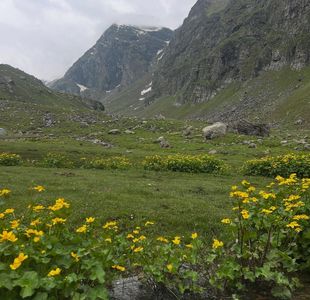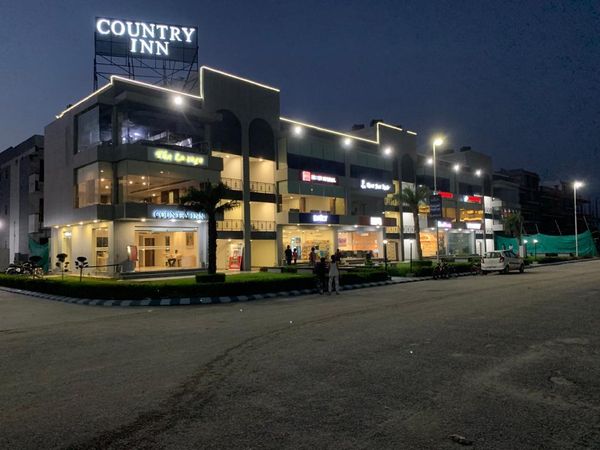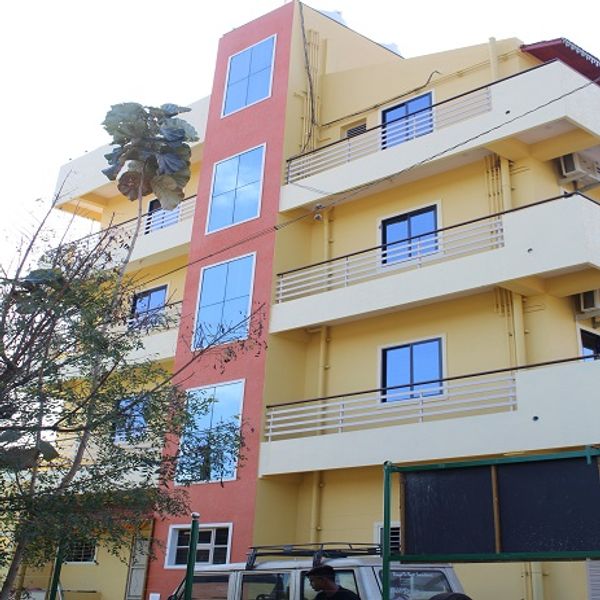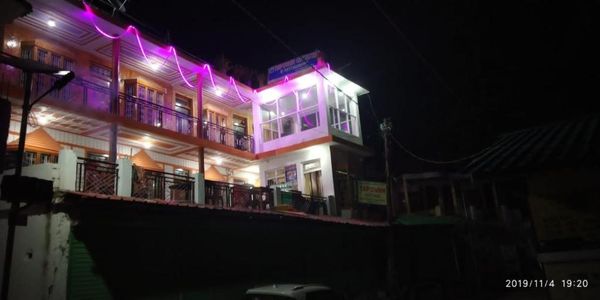Hampta Pass Trek Weather Tips: Pick the Perfect Month to Go
 Deepanshu Negi
29 Jul, 2025
10 mins read
85
Deepanshu Negi
29 Jul, 2025
10 mins read
85

Hampta Pass is one of the most beautiful and beginner-friendly treks in the Indian Himalayas. Nestled between the lush green Kullu Valley and the barren landscape of Lahaul, this trek offers a dramatic change in scenery that feels like walking through two different worlds in just a few days. But to enjoy this stunning experience safely and comfortably, it is important to choose the right time to go. Weather plays a big role in how your trek will turn out, so here is a complete guide on when to plan your Hampta Pass adventure.
Overview of Hampta Pass Trek
Before we dive into the weather details, let’s quickly go over what the Hampta Pass trek is all about. The trek usually starts from Jobra, near Manali in Himachal Pradesh, and goes through Chika, Balu Ka Ghera, Hampta Pass, and ends at Chatru. Many trekkers also add a visit to Chandratal Lake after crossing the pass, which makes the journey even more special.
The trek covers around 25 to 30 kilometers and takes 4 to 5 days to complete. It is suitable for beginners, but like any high-altitude trek, you need to be prepared for changing weather and cold nights.
Best Time to Visit Hampta Pass
Hampta Pass is only accessible for a limited period each year. The best time to go is from mid-June to the end of September. Outside of this window, the pass remains closed due to snow and harsh weather conditions.
Let’s break down the trekking season month by month so you can pick the time that best suits your travel style.
Hampta Pass in June
June marks the start of the trekking season. By mid-June, most of the snow from winter begins to melt, making the trail accessible. However, you will still see a good amount of snow, especially at higher altitudes like Balu Ka Ghera and the pass itself.
June is a great time for those who want to experience snow-covered landscapes without the extreme cold of winter. The days are mostly sunny, with temperatures ranging from 12 to 18°C during the day and dropping to around 0 to 5°C at night.
If you enjoy snow but also want manageable weather, mid to late June is a fantastic time to go.
Hampta Pass in July
July is when the lush green landscapes of the Kullu Valley come alive. Snow continues to melt, and flowers start blooming along the trail. However, this is also when the monsoon begins to show up.
Rainfall in the lower areas like Jobra and Chika can make the trail slippery and muddy. While the higher parts of the trail receive less rain, the trek can still be a bit more challenging during this time.
If you do not mind getting a little wet and want to see the region at its greenest, July could be your pick. Just make sure to pack rain gear and waterproof shoes.
Hampta Pass in August
August continues with the monsoon trend. The Kullu Valley stays vibrant and green, but the risk of landslides and trail disruptions increases. Water streams swell, and cloud cover can sometimes hide the views.
That said, fewer trekkers go in August, which means you can enjoy more solitude on the trail. If you are an experienced trekker or going with a trusted guide and well-prepared team, August can still be enjoyable.
For beginners, this might not be the ideal month unless you are okay with unexpected delays and wet weather.
Hampta Pass in September
September is often considered the best month to trek to Hampta Pass. By this time, the monsoon has retreated, and the skies clear up, offering excellent views of the surrounding peaks and valleys.
The trail is dry and easy to walk on. The greenery is still present, and there is a chill in the air that makes trekking more pleasant. Daytime temperatures hover around 10 to 15°C, while nights can get quite cold, often dropping to 0°C or lower.
This is the perfect time for photography lovers and those who want to avoid the crowds of June and July. The views of Spiti and the barren landscapes on the other side of the pass look especially magical during this month.
When Not to Go
Avoid planning your Hampta Pass trek in October to early June. During these months, the pass is buried under heavy snow, and the temperatures are extremely low. Many parts of the trail become dangerous or simply impossible to cross. Most trekking companies stop offering guided treks after September.
Also, keep in mind that even during the trekking season, sudden weather changes can happen in the mountains. Always check the forecast and stay updated with your trek operator or local guides.
How Weather Affects Your Trek
Visibility: Clear weather offers the best mountain views. Cloudy or rainy days can block the views and reduce visibility, making the trek less enjoyable and slightly risky.
Trail Conditions: Dry weather makes the path easier to walk on. Rain and snow make it slippery, increasing the risk of falls and injuries.
Temperature: Even during the summer months, nights can be very cold at higher altitudes. Proper gear is important no matter when you go.
River Crossings: Streams and rivers along the trail are easier to cross in dry weather. During the monsoon, water levels rise quickly and can become dangerous.
What to Pack Based on Weather
No matter which month you choose, make sure to carry the following:
- Waterproof and windproof jacket
- Warm layers, especially for the nights
- Sturdy trekking shoes with good grip
- Rain gear during monsoon months
- Gloves, woolen cap, and socks for cold weather
- Sunscreen and sunglasses for sunny days
- Headlamp and extra batteries
- First aid kit and personal medicine
Final Tips for a Safe Trek
- Always go with a trusted trekking group or guide
- Acclimatize properly to avoid altitude sickness
- Drink plenty of water and eat well during the trek
- Keep a buffer day in case of weather delays
- Listen to your guide’s advice, especially during bad weather
Conclusion
Hampta Pass is a trek that offers a little bit of everything: snow, forests, rivers, meadows, and rocky terrain. But to truly enjoy it and stay safe, timing your trip right is key. For snow lovers, June is ideal. For green landscapes, try July. For perfect views and fewer rains, September is your best bet. Whatever month you choose within the trekking season, just make sure to come prepared and respect the mountains.
By understanding the weather conditions month by month, you can plan a trek that gives you the best experience and memories to last a lifetime.
Written By:
Deepanshu Negi



Hotels at your convenience
Now choose your stay according to your preference. From finding a place for your dream destination or a mere weekend getaway to business accommodations or brief stay, we have got you covered. Explore hotels as per your mood.


